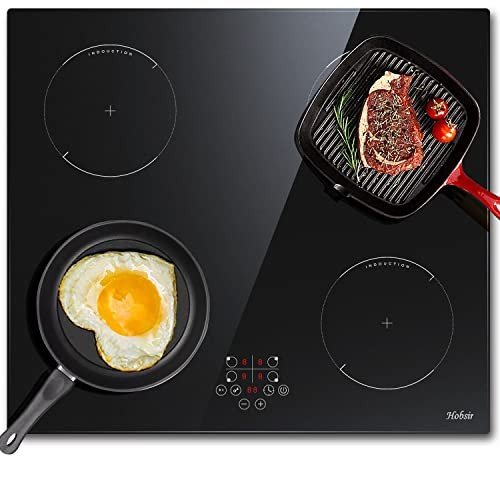Understanding Ovens and Hobs: A Comprehensive Guide
Cooking has actually come a long way given that the days of open flames and basic cooking methods. Ovens Online , ovens and hobs are at the heart of modern kitchen areas, providing versatility, performance, and an array of cooking options. Whether you are an amateur cook or a skilled chef, understanding the distinctions, functions, and functions of these appliances is crucial for optimizing cooking potential. This short article breaks down the different types of ovens and hobs available on the marketplace, their functionalities, and how to pick the right appliances for your kitchen.
What is an Oven?
An oven is an enclosed area designed for heating and cooking food, using numerous approaches such as baking, roasting, and broiling. Ovens are available in numerous types, each serving special cooking preferences and requirements.
Kinds of Ovens
Standard Ovens:
- Use gas or electricity for heating.
- Usually include a heating element at the top and bottom.
- Perfect for basic baking jobs.
Convection Ovens:
- Use a fan to circulate hot air, promoting even cooking.
- Ideal for baking, roasting, and reheating.
- Decreases cooking time and boosts flavor.
Steam Ovens:
- Utilize steam to cook food while maintaining moisture and nutrients.
- Exceptional for health-conscious cooking, such as vegetables and fish.
Microwave Ovens:
- Use electromagnetic radiation to heat food rapidly.
- Best for reheating leftovers or cooking basic meals.
Wall Ovens:
- Built into the wall, saving space in the kitchen.
- Offered in numerous configurations, including single or double ovens.
Secret Features of Ovens
- Temperature level Control: Precision heating for different baking and cooking procedures.
- Self-Cleaning Options: Some models have self-cleaning modes that use heats to burn food residue.
- Smart Features: Wi-Fi connection permits remote pre-heating, monitoring, and dish management by means of smart devices.
What is a Hob?
A hob is a cooking surface area, often referred to as a stove or cooktop, where cookware is placed for heating. Hobs are available in different materials, sizes, and heating approaches, dealing with varied cooking requirements.
Kinds of Hobs
Gas Hobs:
- Utilize burner for direct flame cooking.
- Deal exact temperature level control and are favored by many expert chefs.
Electric Hobs:
- Use electric coils or smooth tops.
- Some models are geared up with induction technology, supplying rapid heating through electro-magnetic energy.
Induction Hobs:
- Cookware must be made of magnetic products.
- Very energy-efficient, offering fast heat and lowering burn risks.
Ceramic Hobs:
- Feature a glass-ceramic surface with heating components beneath.
- Easy to clean but can be less energy-efficient than induction hobs.
Secret Features of Hobs
- Burner Configuration: Varies from two to six burners, depending upon model and size.
- Power Levels: Multiple settings enable higher accuracy in cooking.
- Safety Features: Options like flame failure gadgets and child lock settings ensure security during cooking.
Picking the Right Oven and Hob
Selecting the right oven and hob for your kitchen involves cautious factor to consider of different factors. Below is a list of concerns to guide your selection process:
- What is your main cooking design?
- Just how much kitchen space do you have?
- What is your budget?
- Do you prefer gas or electric home appliances?
- Are extra features like wise connectivity crucial to you?
Table Summary of Key Differences Between Ovens and Hobs
| Function | Oven | Hob |
|---|---|---|
| Functions | Baking, roasting, broiling | Boiling, frying, sautéing |
| Cooking Method | Enclosed heat | Direct cooking surface area |
| Temperature level Control | Adjustable settings | Range settings |
| Types | Electric, gas, convection, microwave | Gas, electric, induction, ceramic |
| Cooking Capacity | Larger (can cook multiple meals) | Smaller (concentrate on instant cooking) |
| Cleaning | Self-cleaning options offered | Typically manual cleaning needed |
Upkeep Tips for Ovens and Hobs
Appropriate care and maintenance of your cooking appliances extend their life-span and efficiency. Here are important maintenance suggestions:
Regular Cleaning:
- Clean the oven interior after each use to prevent residue buildup.
- Clean down hob surface areas after cooking to avoid discolorations.
Check Seals:
- Ensure the oven door seals are undamaged to keep energy efficiency.
- Change damaged gaskets and seals as needed.
Examine Burners and Elements:
- For gas hobs, check for clogs in burners.
- For electric hobs, examine coils and surface areas for signs of wear.
Frequently asked questions
Can I utilize any pots and pans on induction hobs?
- No, induction hobs only work with magnetic cookware, such as cast iron or stainless steel.
What is the most energy-efficient cooking appliance?
- Induction hobs are normally the most energy-efficient alternative, using less energy than conventional gas or electric models.
How typically should I clean my oven?
- It's advisable to clean your oven every couple of months, or more regularly if you use it typically.
Can I set up an oven and hob independently?
- Yes, both appliances can be set up separately based upon kitchen style and area.
What should I think about when installing a gas hob?
- Ensure correct ventilation and abide by local safety codes. It is suggested to have a professional install gas devices.
Understanding the functions, types, and upkeep of ovens and hobs can substantially improve your cooking experiences. Selecting the right home appliances tailored to your cooking design, kitchen space, and safety requirements can make all the distinction in achieving culinary success. By being informed about your alternatives, you can take pleasure in a more efficient and enjoyable cooking journey, bringing delicious meals to your table with ease.

